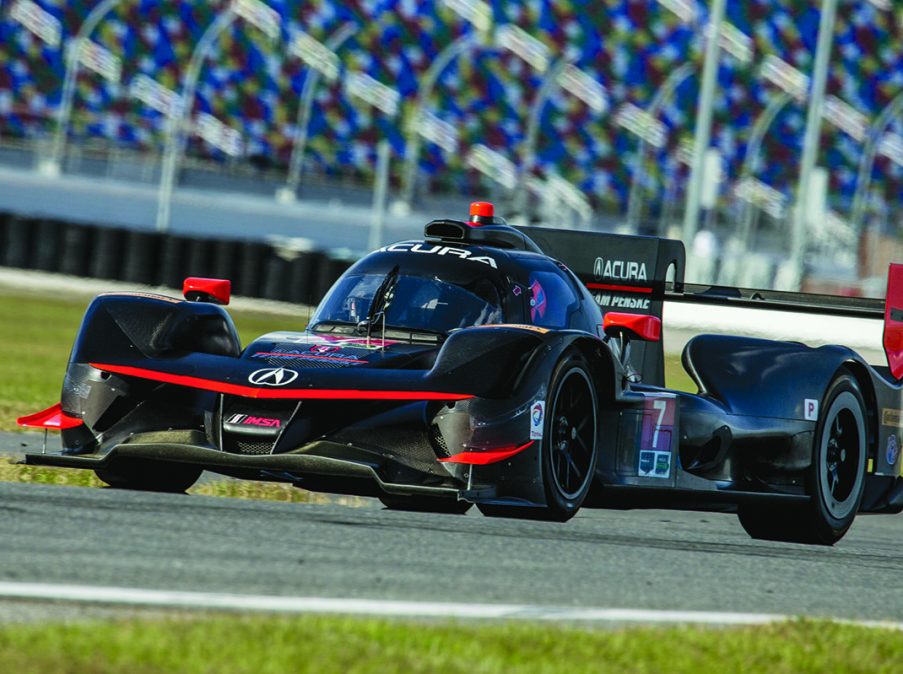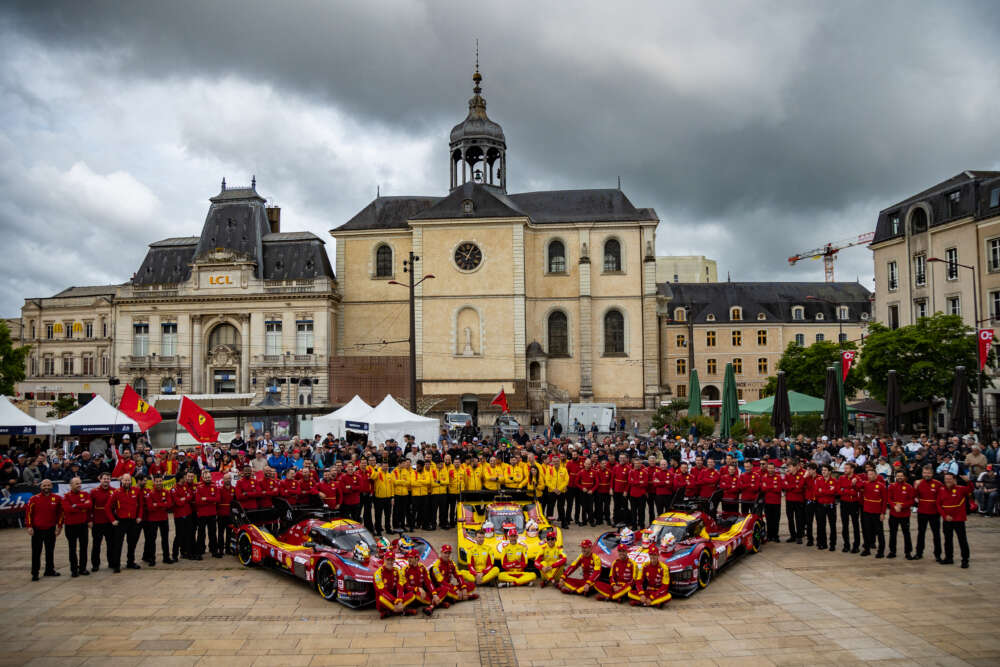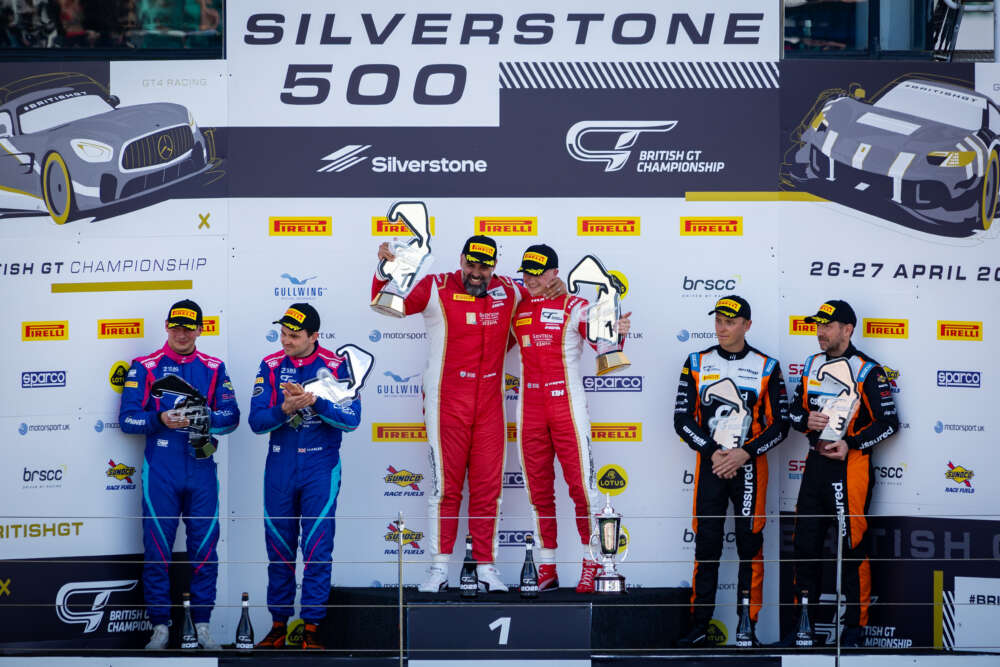
Penske Racing’s entry into IMSA’s DPi class raised the “price of poker” when the team announced a partnership with Acura. Like other DPi teams, Penske will run a manufacturer-designed body on an approved DPi chassis.
The cars will feature ORECA chassis with Acura bodywork and engines.
In typical Penske modus operandi, team owner Roger Penske wanted to make sure the infrastructure was in place.
“We were approached by Acura several months ago,” Penske said. “A year ago Tim (Cindric, team president) and I discussed what was going to be our structure on the Indy car side going forward and could we take this on without impacting any of the other programs. Now we’re active in Australia (V-8 Supercars). We had NASCAR (Cup), we had XFINITY, certainly had Indy. We were going to pull back on one of the Indy cars, not running five cars at Indy gave us a group of people internally who had capability.”
Penske did not tarry once that was settled. He wanted to get into the game in 2017 at Petit Le Mans, the final race of the IMSA season. The Acura body and engine were not ready, so they raced and ORECA LMP2 chassis with a Gibson V-8 engine. Helio Castroneves and Juan Pablo Montoya were signed to drive. Castroneves had an incident in practice and the car was repaired. He redeemed himself by putting the car on pole for the race. The Penske newcomers raised eyebrows.
Then Castroneves got punted into a sand trap early in the race by a GT Ferrari and precipitously fell in the running order. Many reckoned Penske’s maiden voyage was doomed.
Not on Penske’s watch. The team quickly got the wounded car back on track, putting paid to the Captain’s epic mantra “Effort Equals Results.”
“We were fast, we sat on the pole,” said Penske. “Helio got hit by the Ferrari early on and took 400 pounds of downforce out of the car. So we were running with a car somewhat to the oversteer side. As it cooled down we got very competitive.”
That’s an understatement. Montoya clawed his way through the field, finishing on the podium. Asked if he was driving the wheels off the car, the feisty Columbian said: “I was. We had really good pace. It lacked a little bit but overall it was very exciting. I had a blast. It was fun.”
IMSA is not Penske’s first road racing rodeo. Instead, it’s a homecoming because that’s where Penske earned his spurs. Turn the clock back to 1958 when Penske purchased, raced and sold race cars. He was equally successful behind the wheel, making his first professional start at the long defunct Marlboro Motor Raceway. Sports Illustrated named him the 1960 SCCA Racer of the Year. He even drove two Formula One races back in the day.
Penske hung up his helmet in 1965 and soon began his career as a team owner. Big-time success came when he signed Mark Donohue in 1966. The pair won three consecutive manufacturers’ championships in a Camaro. There were no Trans-Am drivers’ championships at that time.
The Porsche 917 juggernaut came in 1971 with two consecutive Can-Am titles, the last in Donohue’s 917-30 earth-bound rocket ship. Penske re-upped with Porsche in 2006 and won two American Le Mans LMP 2 championships. Although Penske did not compete in 2008, Porsche RS Spyders nipped Acura for the LMP2 title by a single point. Isn’t that ironic?
Acura officially pulled the covers off its ARX-05 DPi race car at The Quail during Monterey Car Week festivities. ARX-05 stands for Acura Racing experimental, Generation 5.
Acura brass were in attendance at the event. John Ikeda, Acura vice president and general manager, said: “At Acura, precision crafted performance is at the heart of everything we do. Whether it is our production cars or a prototype race car, if you want to be a performance brand, you need to perform.”
The ARX-05 bodywork, like that of other manufacturer-backed DPi race cars, has brand specific styling. Acura Global Creative Director Dave Marek led the design team.
“We created a variety of initial sketches, then pared those down to a handful of potential designs,” Marek said. “Next came aero and wind-tunnel model testing and time for the engineers to have their say. The design continued to be refined throughout the testing and evaluation process until we came up with a final treatment that met our performance goals, while maintaining Acura’s styling cues. It’s been an exciting process.”
As mentioned earlier, Team Penske rode out a tough baptism at Petit Le Mans.
“When we got the car back and tested (after the race), it was down 400 pounds,” Penske said. “It’s a tremendous amount and think about it that car was in pieces the weekend before we went to Petit because we had been in an accident when we were down there testing. We lost the whole tub (the main carbon fiber monocoque structure) so the car had not run. We ran it at the airport up and down to make sure all the systems were OK. That’s the only testing we did before Atlanta.”
Source : speedsport.com






















